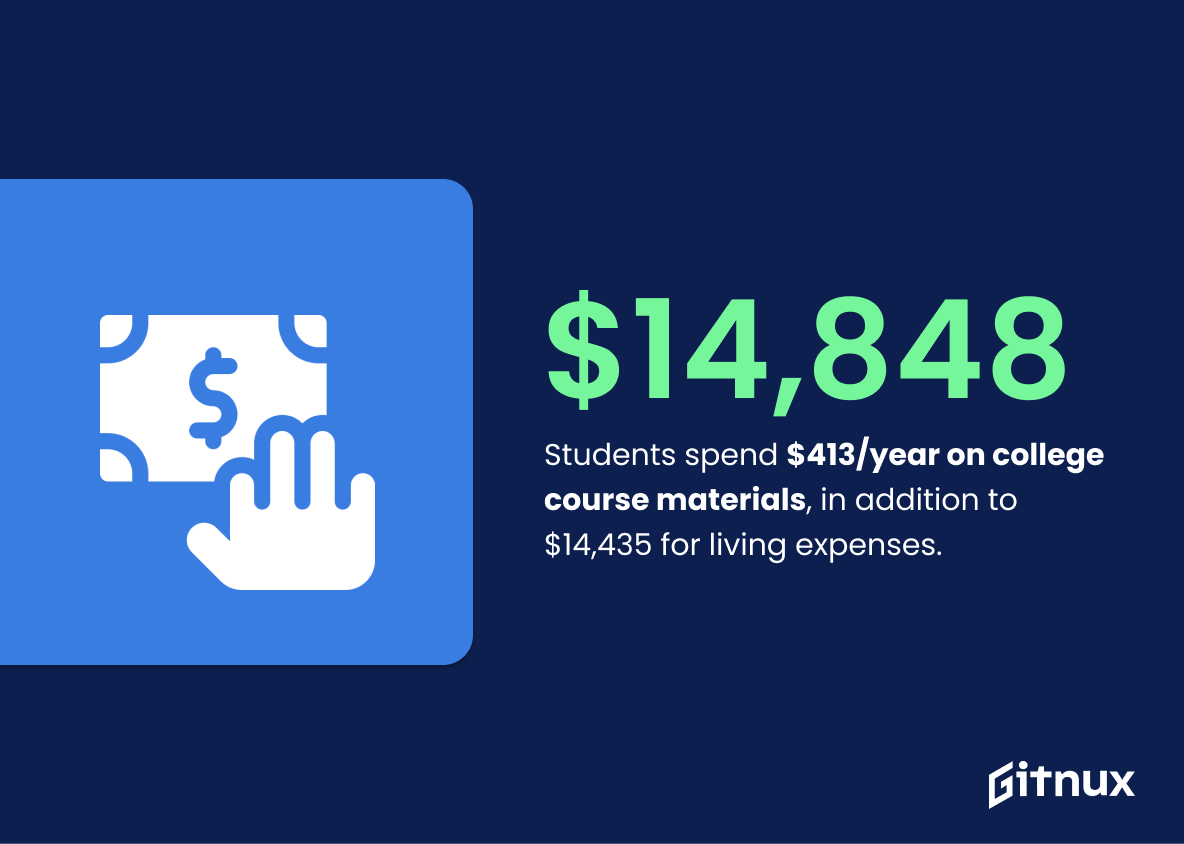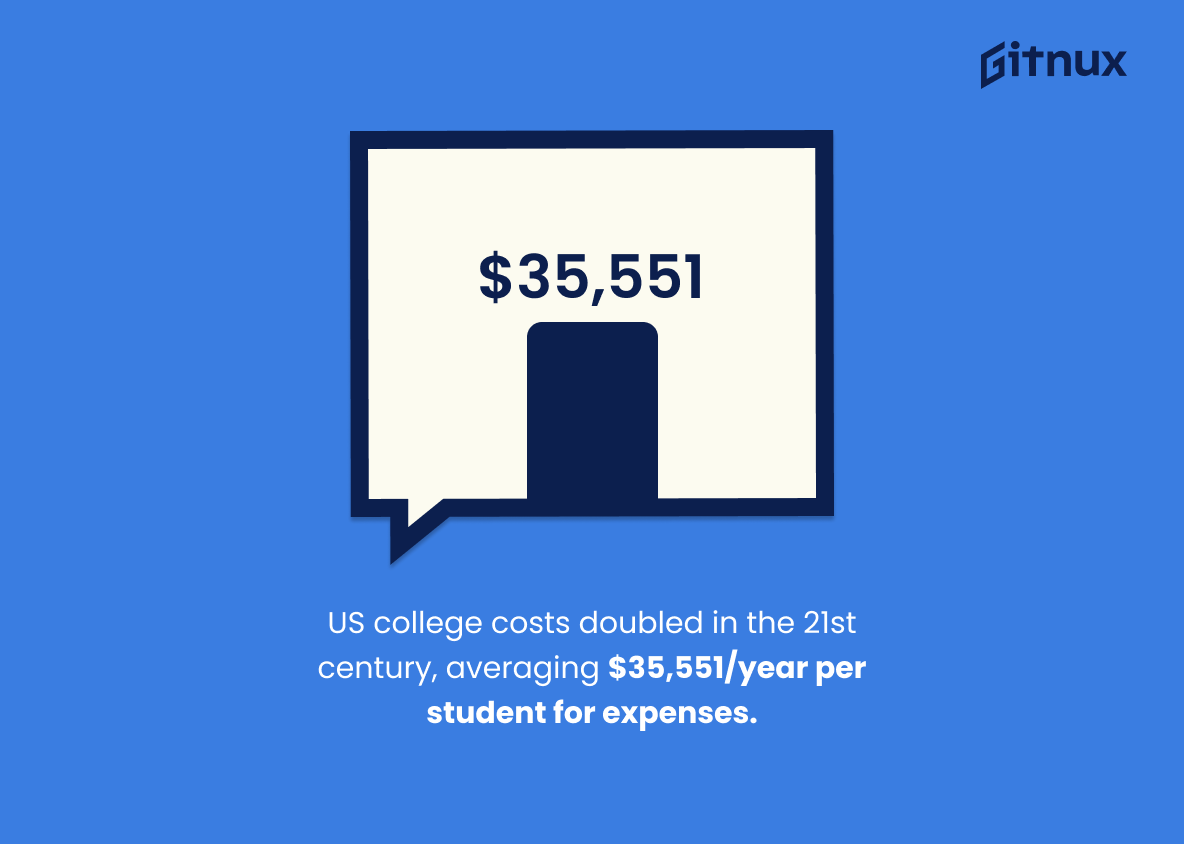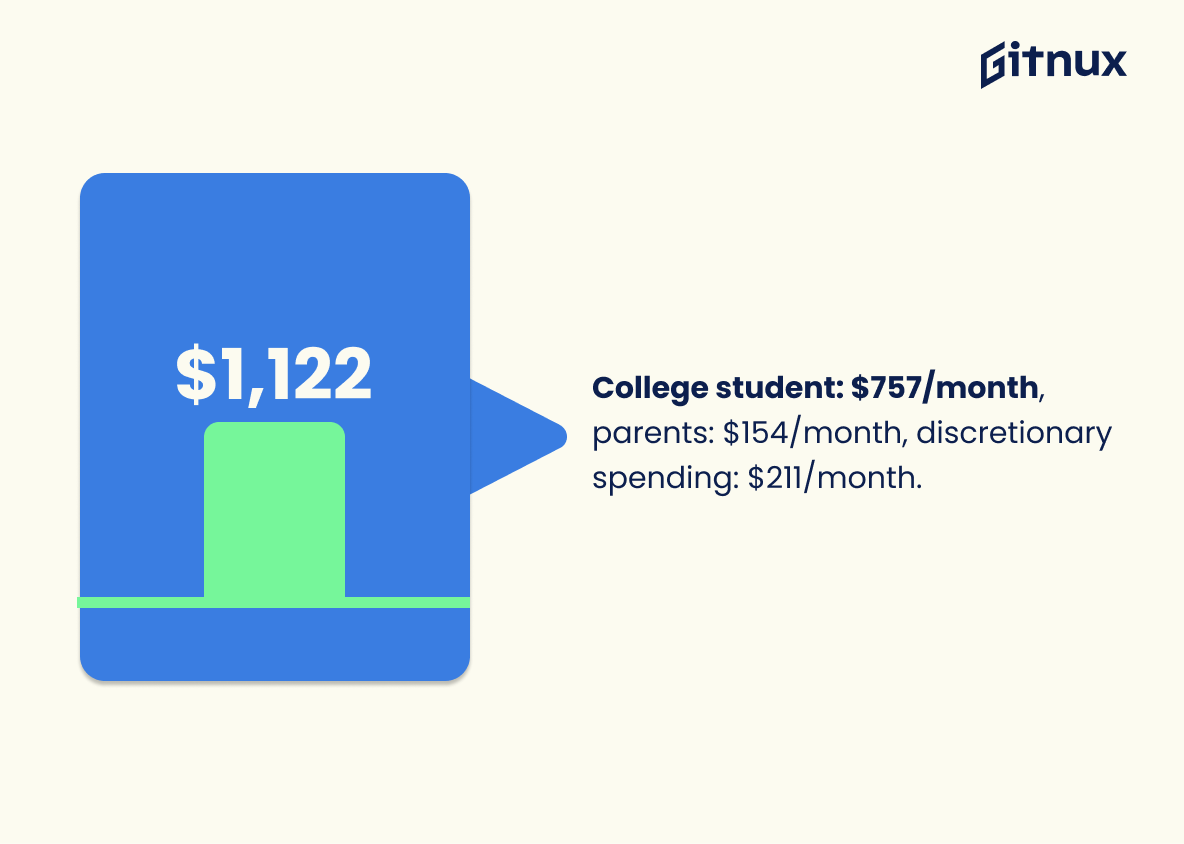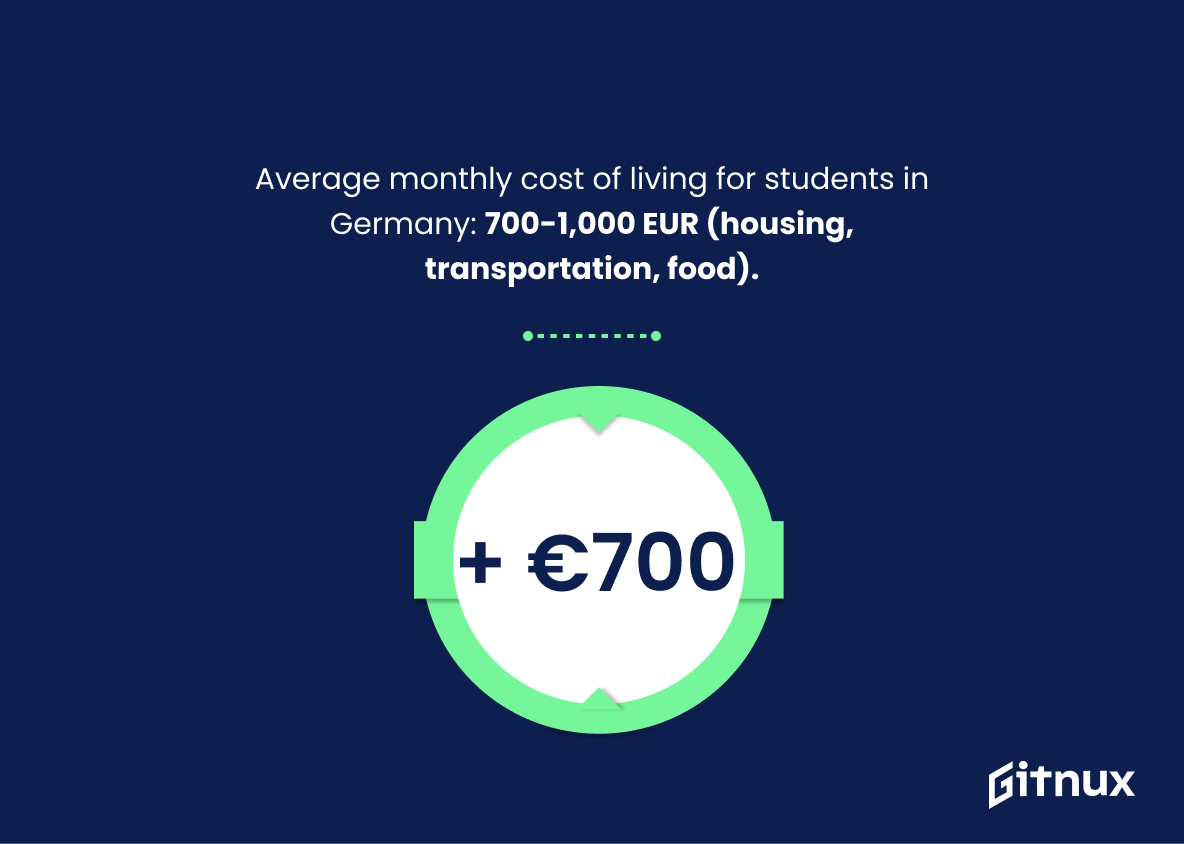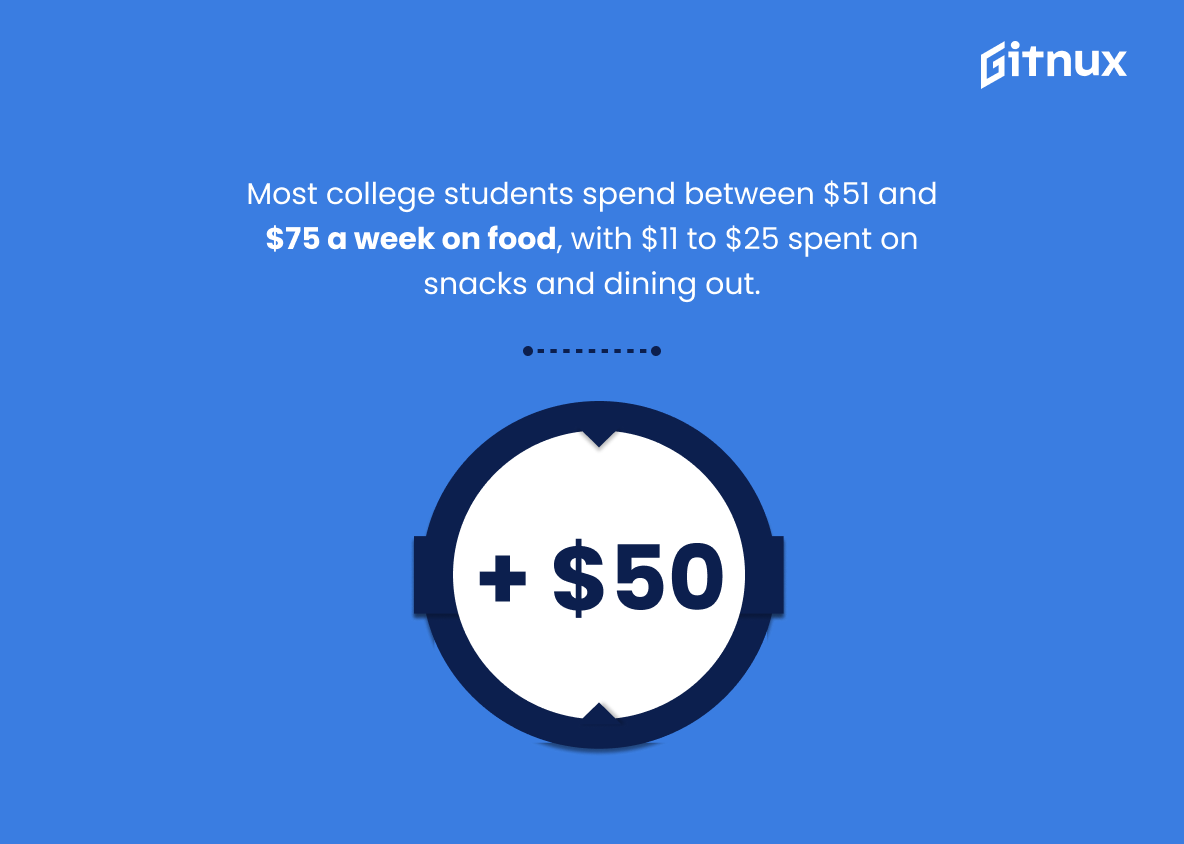As college students, it’s no surprise that our spending habits are often a source of stress and confusion. With tuition, textbooks, and other expenses, it can be hard to know where to draw the line when it comes to our spending.
To help you make more informed decisions, we’ve compiled some of the most recent college student spending statistics. From where our money is going to how much we’re spending, these statistics will give you a better understanding of your own spending habits and how they compare to other students. Read on to learn more about college student spending.
College Student Spending: Most Important Statistics
The average college student earns $757 a month, with the majority of income coming from jobs. Parents contribute an average of $154 to a student’s monthly income, and students have an average of $211 in discretionary spending per month.
The average monthly cost of living for students in Germany, including housing and public transportation, is between 700 and 1,000 EUR, with an additional 170 EUR spent on food.
College Student Spending: Statistics Overview
Students spend an average of $413 per year on college course materials, in addition to the estimated $14,435 for living expenses.
This provides an overview of the total cost of attending college, which includes tuition, additional expenses, and cost of living. This information is important for students and their families to consider when making decisions about college.
The average cost of college in the United States has more than doubled in the 21st century, with an average of $35,551 per student per year for books, supplies, and living expenses.
There are increasing cost of college tuition and fees, and there is a potential long-term financial burden of a bachelor’s degree.
It also demonstrates the disparity between in-state and out-of-state tuition costs, as well as the difference between public and private universities. This information can be used to inform college students and their families when making decisions about college costs and financing options.
College students in the US spend an average of $600 on rent, $413 on books, between $40 and $180 a week on alcohol, and $159 on back-to-college shopping, while funding 92% of their college education using financial aid and having a median income of $34,089 a year.
This provides a comprehensive overview of the average costs associated with college and the financial aid options available to students.
It also highlights the financial burden that college students face and the need for financial aid to cover the costs of college.
The average college student earns $757 a month, with the majority of income coming from jobs. Parents contribute an average of $154 to a student’s monthly income, and students have an average of $211 in discretionary spending per month.
This matters because it provides insight into the financial situation of college students, and can be used to inform budgeting and spending decisions.
The average monthly cost of living for students in Germany, including housing and public transportation, is between 700 and 1,000 EUR, with an additional 170 EUR spent on food.
This demonstrates insights into the average amount of money that college students in Germany need to budget for their monthly expenses.
This information can be used to help students plan their finances and make informed decisions about their spending.
The average cost of student housing in Germany is €350-€500 per month, with other expenses totaling €850-€1,000 per month.
This statistic is important to understand college student spending in Germany, as it provides an estimate of the total cost of living for students.
This information can be used to inform budgeting decisions and help students plan for their college expenses.
The cost of living in France varies by region and lifestyle, with accommodation costs typically higher than the global average of 200-300 EUR/month and grocery costs of 250-300 EUR/month in Paris.
It provides a benchmark for the cost of living in France, which can be used to compare with the cost of living in other countries and regions.
This can help college students make informed decisions about where to live and how much to budget for living expenses.
University tuition fees for bachelor’s, master’s, and doctorate degrees vary from 200-600 euros, with living expenses costing an additional 1800 euros per month.
This statistic is important in the context of college student spending statistics because it provides an overview of the cost of attending a university, which can help students and their families plan for the financial costs associated with higher education.
The average annual cost of community college, energy, health insurance, monthly rent, and books and supplies can add up to a significant amount of money for college students.
This matters in the context of College Student Spending Statistics because it helps to provide a better understanding of the financial burden that college students face.
It is important to be aware of the costs associated with college so that students can plan accordingly and make informed decisions about their education.
Most college students spend between $51 and $75 a week on food, with $11 to $25 spent on snacks and dining out.
This provides insight into the average amount of money college students are spending on food each week.
This information can be used to inform budgeting decisions and to identify areas where college students may be overspending.
Conclusion
In conclusion, college student spending statistics provide a valuable insight into the financial habits of college students. While it is clear that college students are spending more than ever before, it is also evident that they are making smart decisions about their spending.
College students are budgeting, saving, and investing in their future. By understanding the spending habits of college students, universities and businesses can better serve the needs of this important demographic.
References
1 – https://www.thinkimpact.com/average-college-student-spending/#:~:text=Students%20spend%20roughly%20%24413%20per,etc.%2C%20is%20around%20%2414%2C435.
2 – https://educationdata.org/average-cost-of-college
3 – https://spendmenot.com/blog/college-student-spending-statistics/
4 – https://www.stateuniversity.com/blog/permalink/The-Spending-Habits-of-College-Students.html
5 – https://www.mastersportal.com/articles/358/university-tuition-fees-and-living-costs-in-germany-low-cost-german-degrees.html
6 – https://www.expatrio.com/living-germany/costs-living-germany/living-costs-student-germany
7 – https://www.mastersportal.com/articles/355/tuition-fees-and-living-costs-in-france.html
8 – https://aljawaz.com/en/studying-and-living-cost-in-france/
9 – https://thenextgenbusiness.com/college-student-spending-statistics/
10 – https://learn.recess.is/blog/college-spending-habits-blogs
